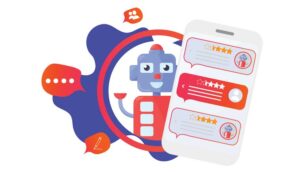2021 has ushered in the age of voice, meaning a brand’s vocal identity is nearly as important as its logo.
As voice assistants are increasingly becoming part of our daily lives, brands must grasp and meet the latest challenges of vocal branding. To ensure customers easily recognise them without the help of a logo or graphic interface, brands first need to ask themselves the right questions.
Did you know that by 2024, consumers will be interacting with voice assistants on more than 8.4 billion devices? There is no doubt that tomorrow’s Internet experience will largely be shaped by voice media.
The way consumers communicate with brands has changed significantly over the last few years. Remote spoken conversations have become a natural channel of communication with brands and, increasingly, customers interacting with non-human respondents.
Indeed, bots, also known as conversational agents or voice assistants, are being integrated into an increasing number of devices: smartphones, tablets, computers, voice speakers, car navigation systems along with household appliances like hoovers and coffee makers, or even accessories like watches.
To give an example of the scale of this integration, the Alexa app was downloaded 91,700 times in the UK in 2020 alone.
Bots present a tremendous opportunity to provide a personalised experience throughout the customer journey.
Beyond their 24/7 availability, capacity to be deployed on a variety of channels and ability to respond to the growing need for omnichannel customer service, bots are also able to collect data and send information, making them invaluable tools for fostering customer loyalty.
Well aware of this new reality, customer experience (CX) managers know that it has never been more important for brands to leverage voice media and enhance their vocal branding.
Vocal Branding: Creating a Bot Persona
Designing a conversational agent requires a team of multi-disciplinary experts, as well as the right methodology and tools. However, CX managers know that engaging a customer on a conversational interface is first and foremost about creating an emotional connection.
Just like user personas, bot personas are akin to a “humanised portrait” of a bot that reflects the brand’s vocal branding through:
- Personality: serious, funny, enthusiastic, thorough, benevolent, helpful, flattering, casual…
- Motivations: to be of service, to be fast and efficient, to be precise, to find a solution…
- Interests: literary, cinematographic or musical references, passions…
A bot’s personality has to be consistent with a brand’s universe, its values and its target(s). For example, a bot in the banking sector will not speak in the same way as a bot in retail.
The use case which justifies a bot’s creation is also a decisive element in defining its personality. For example, a bot whose mission is to handle customer complaints will not express itself in the same way as a bot that provides purchasing advice.
Finally, a bot might or might not be given a human-sounding name, or one reminiscent of the use case and/or the brand.
Defining an Editorial Line
Bots find the answers to users’ questions in their scripts. But before writing the script that will define a bot’s responses, it is important to establish an editorial line based on the bot persona. It has to ensure the consistency of the bot’s responses throughout its evolution.
Crucially, a script must provide guidelines on:
- The use of first or last name, or I or we, when addressing a customer.
- The choice of a language register: semantic field, syntax, expressions used and language tics.
- Developing a tone: passionate, serious, casual, comical, etc.
Picking the Right Voice
The choice of the bot’s voice is another key element of successful vocal branding. Indeed, the intonation (also known as prosody) and the tone of voice are both key, as they convey emotion.
Brands should consider whether they would be better represented by a male or female voice, a smooth or reassuring voice, a young or mature voice, etc.
Studio-recorded voice actors can be used to give voicebots their voice, but also computer-generated voices. This second option offers more flexibility to tweak dialogues and provide customised answers.
At times, however, the right solution is simply a mix of both. In this case, it’s important to make sure that the two are in sync, to provide a rewarding voice experience.
What Is Small Talk?
It is important to remember that not all interactions with a user are related to the intended use case: these unrelated interactions are what we call social conversation or small talk.
Indeed, some (if not most) users enjoy testing bots by asking them questions about their parents, by asking if they like them or sometimes even by insulting them.
Those who create bots must anticipate these kinds of questions because the bots’ answers participate in shaping their personalities.
Author: Guest Author
Published On: 3rd Jun 2021 - Last modified: 8th Jun 2021
Read more about - Guest Blogs, Odigo















